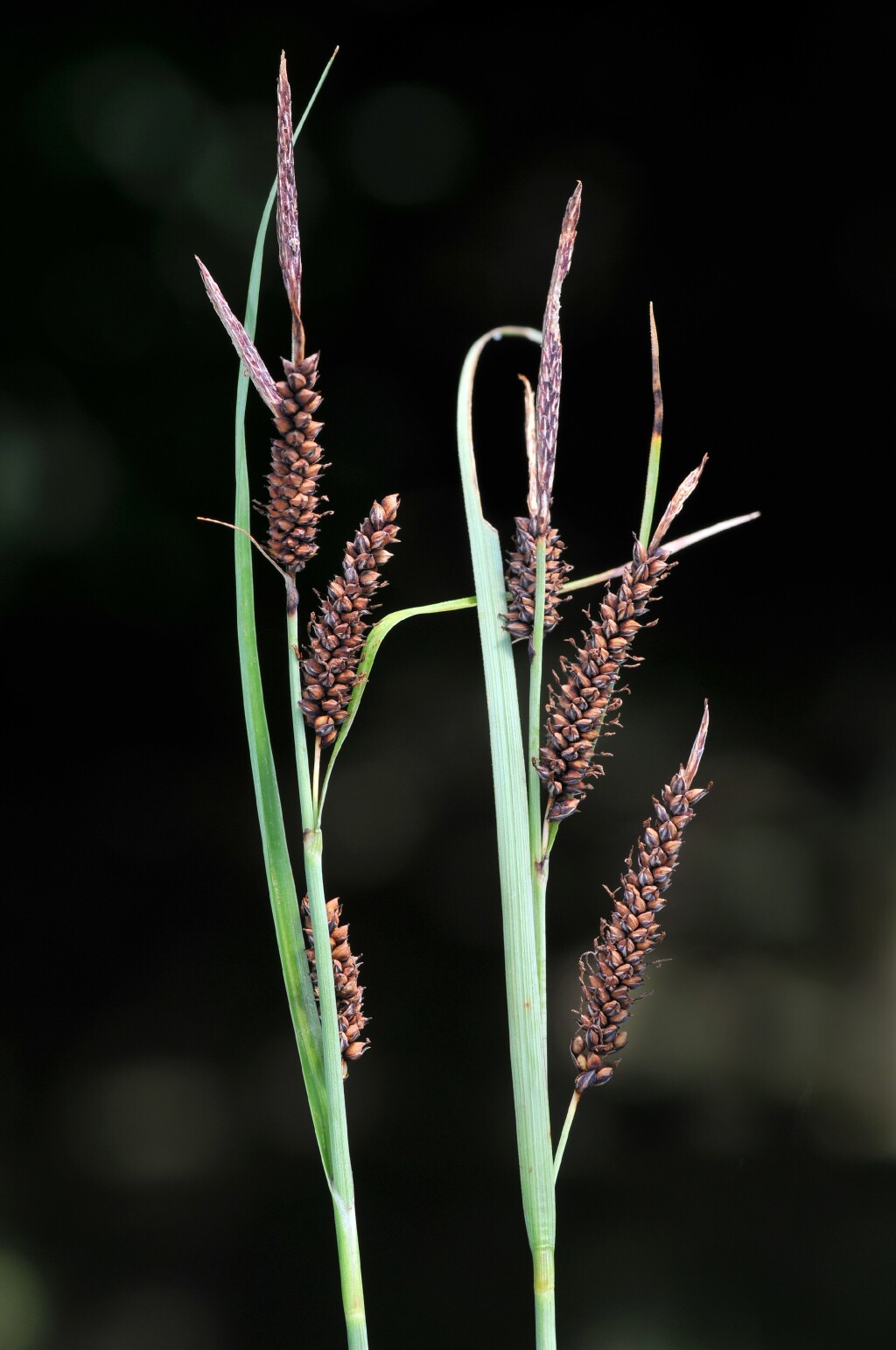Carex flacca
Schreb. Glaucous SedgeRhizome long; shoots loosely tufted. Culms erect, trigonous to terete, smooth, 10–60 cm long, c. 1.2 mm diam. Leaves shorter than culms, 1.5–4 mm wide, glaucous and minutely mamillate on undersurface; sheath dark brown; ligule obtuse to rounded. Inflorescence erect to drooping to erect, 6–10 cm long, with spikes solitary at nodes; lowest involucral bract exceeding or equalling inflorescence. Spikes distant, 1–3.5 cm long; upper 1–3 spikes male, erect, sessile; lower spikes female or with male flowers above, short-pedunculate, spreading; uppermost spikes male; glumes obtuse to broad-acute, often shortly mucronate, red-brown to very dark red-brown, with a paler midrib and narrow white or hyaline margins; female glumes 2–3 mm long; utricles 2–3 mm long, c. 1.5 mm diam., ellipsoid to obovoid, few-nerved, minutely papillose to colliculate, sometimes minutely and sparsely hispid, yellow-brown tinged dark red-brown; beak c. 0.2 mm long, with apex truncate; style 3-fid. Nut ellipsoid to obovoid, trigonous, dark yellow-brown, under translucent surface. Flowers spring.
GleP, VVP, GipP, WaP. Also naturalised in Tas. Native to northern Africa (Algeria, Libya, Morocco, Tunisia), Eurasia. Naturalised in Falkland Islands, North and South America, and New Zealand. Known in Victoria by a few collections near Tyrendarra (Darlots and Eumeralla Creeks) in the far south-west.
A distinctive species with grey green leaves at least when young, with mamillae on leaf lower surface, and with papillose utricles. For differences with Carex buxbaumii with which it may possibly be confused, see key. Sometimes sold in nurseries, which may further aid the spread of the species in Victoria.
Wilson, K.L. (1994). Cyperaceae. In: Walsh, N.G.; Entwisle, T.J., Flora of Victoria Vol. 2, Ferns and Allied Plants, Conifers and Monocotyledons, pp. 238–356. Inkata Press, Melbourne.
 Spinning
Spinning
